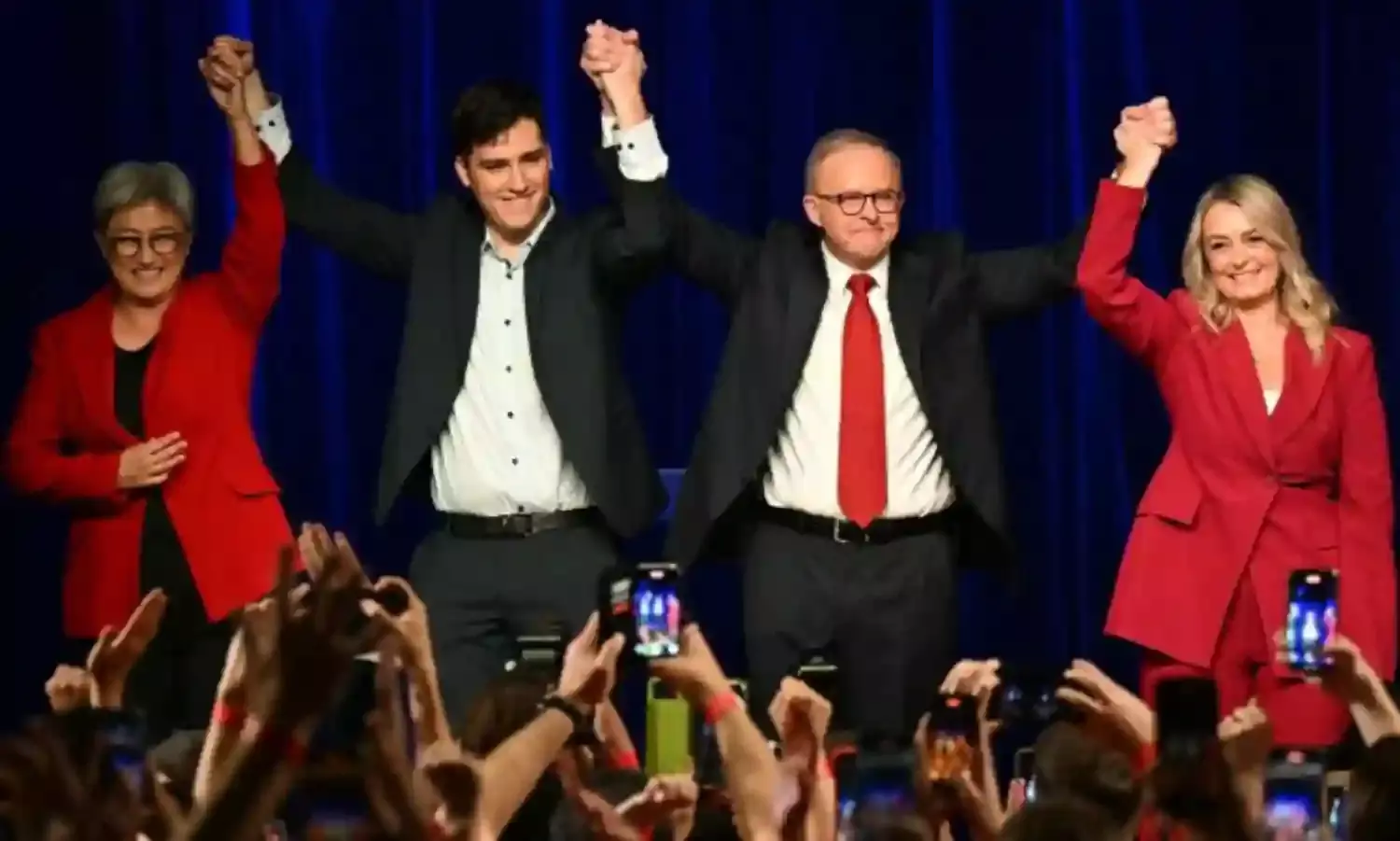Trump Shadow Behind Labor Win In Australia
Crushing defeat for the right-wing Liberal-National Colaition

Echoing the Canadian election results, the Trump Effect also shaped the outcome of Australia’s 2025 federal election. Held on May 3, the vote saw the incumbent Centre-Left Labor Party, led by Prime Minister Anthony Albanese, secure a historic second term with a landslide victory. Labor is projected to win around 86 of the 150 seats in the House of Representatives, significantly expanding its majority.
The Right-wing Liberal-National Coalition, led by Peter Dutton, suffered a crushing defeat, securing only about 41 seats. Dutton himself lost his Queensland seat of Dickson to Labor’s Ali France. The Left-wing Greens lost two of their three Queensland seats, retaining only one, while several Teal independents (community-based or non-party candidates) held on to their constituencies.
Labor secured 34.7% of the primary vote, ahead of the Coalition’s 31.7%, and led the two-party-preferred count by 53.5% to 46.5%. This marks the first time since John Howard in 2004 that a Prime Minister has won a second full term, and it’s Labor’s strongest two-party-preferred margin since 1943.
Right-Wing Coalition was routed? Several factors led to the Coalition’s dramatic defeat. A key influence was the so-called Trump Effect: the perception that Peter Dutton’s campaign echoed Donald Trump’s brand of hardline conservatism. Dutton, a former police officer, ran on policies that included controversial proposals to cut immigration and public sector cuts modelled after Trump’s Department of Government Efficiency.
His alignment with the Far-Right One Nation Party, particularly through fixed second-preference deals, alienated centrist and moderate voters. Dutton’s push for nuclear energy was seen as expensive and impractical, and his campaign misjudged the electorate’s desire for stability, especially after Trump’s April 2025 tariff announcement, which raised economic anxieties in Australia. Albanese successfully positioned himself as the safer, steadier choice.
Failure to address voter priorities: Voters were focused on cost-of-living pressures, housing affordability, and healthcare—issues the Coalition largely failed to address. Instead, it fixated on polarizing topics, including its opposition to the 2023 Indigenous Voice referendum and its nuclear energy agenda. Labor, by contrast, offered concrete measures like redistributing tax cuts and increasing housing support, which resonated more with public sentiment.
The Coalition's campaign was further damaged by embarrassing missteps, such as Dutton underestimating everyday grocery costs, highlighting the parties disconnect from ordinary Australians, already rattled by the danger his Trump-type polices for Australia.
Loss of core & urban support: The Coalition saw a sharp decline in support across urban and outer-suburban regions, losing key seats to Labor and failing to reclaim inner-city constituencies held by Teal independents. While Dutton’s strategy targeted outer suburbs and regional areas, it overlooked broader voter concerns, leading to adverse swings in states such as New South Wales, Queensland, and Tasmania.
Leadership collapse & party disarray: Dutton’s personal defeat—an extremely rare event for an opposition leader—symbolized the wider collapse of the Coalition. The Liberal Party, the Coalition’s main force, faces deeper issues, including an aging membership (average age nearing 63) and an inability to attract younger voters.
Strong Labor campaign & Crossbench dynamics: Labor’s disciplined and focused campaign stood in stark contrast to the Coalition’s stumbles. Albanese’s recovery from previously low approval ratings proved pivotal. The expanded crossbench, comprising Greens (their second preference went to Labor) and independents, also diluted the Coalition’s chances of forming government, making the 76-seat majority threshold unreachable. Labor’s ability to attract preference flows from minor parties including the Greens and independents further strengthened its position.
Analysts across the country point to the Trump-like tone of Dutton’s campaign and strategic misjudgements as key reasons for the Coalition’s defeat. While other factors such as Labor’s welfare and more Medicare played a role, the fear of Trump-style politics appeared to drive many traditionally conservative or undecided voters toward Labor’s more moderate Centre-Left platform.
Neeraj Nanda is a senior journalist based in Melbourne, with around 42+ years media experience in India & Australia. He has worked in print, radio, television, and online media. Currently, he is the Editor of South Asia Times (SAT) Media Group Melbourne, Australia.The views expressed here are the writer’s own.



